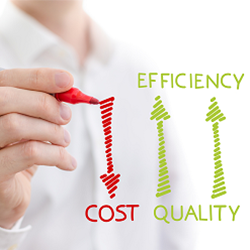Cost of Quality

In process improvement efforts, quality costs or cost of quality is a means to quantify the total cost of quality-related efforts and deficiencies. It was first described by Armand V. Feigenbaum in a 1956 Harvard Business Review article.[1]
Prior to its introduction, the general perception was that higher quality requires higher costs, either by buying better materials or machines or by hiring more labor.[2] Furthermore, while cost accounting had evolved to categorize financial transactions into revenues, expenses, and changes in shareholder equity, it had not attempted to categorize costs relevant to quality, which is especially important given that most people involved in manufacturing never set hands on the product.[3] By classifying quality-related entries from a company’s general ledger, management and quality practitioners can evaluate investments in quality based on cost improvement and profit enhancement.[4]
Need Cost of Quality consultation? Contact us now.

